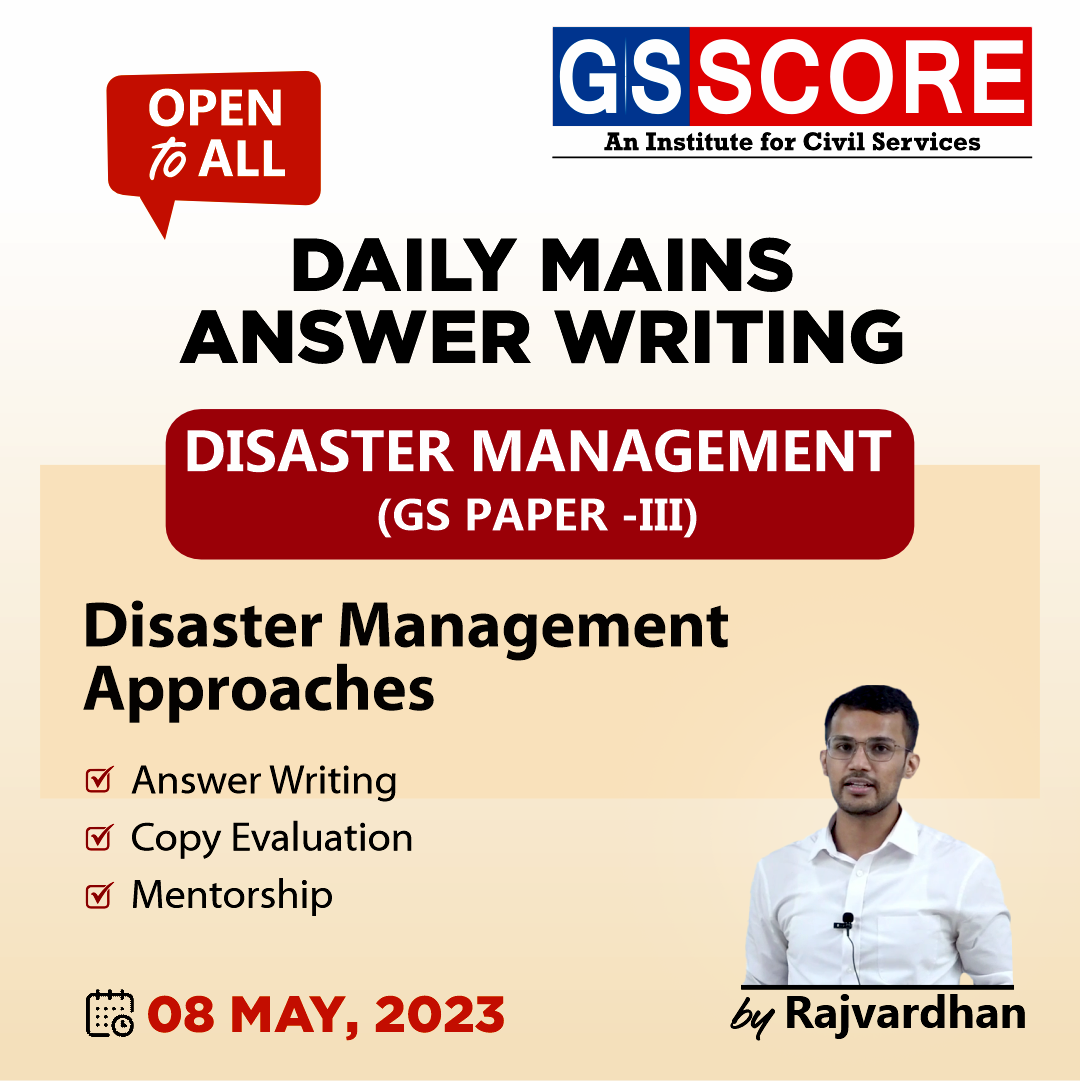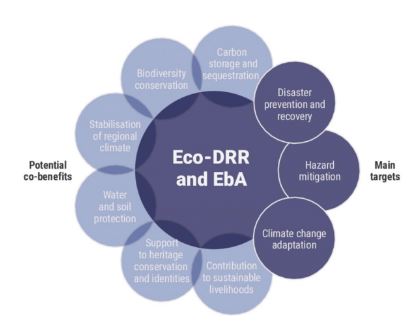


Instruction:
- There will be 2 questions carrying 10 marks each. Write your answers in 150 words
- Any page left blank in the answer-book must be crossed out clearly.
- Evaluated Copy will be re-uploaded on the same thread after 2 days of uploading the copy.
- Discussion of the question and one to one answer improvement session of evaluated copies will be conducted through Google Meet with concerned faculty. You will be informed via mail or SMS for the discussion.
Question #1. The Ecosystem-based Disaster Risk Reduction (Eco-DRR) approach helps us to reduce the risk of disasters. How can this approach help in mitigating the impact of tropical cyclones?
Question #2. Discuss the recent measures initiated in disaster management by the Government of India departing from the earlier reactive approach.
(Examiner will pay special attention to the candidate's grasp of his/her material, its relevance to the subject chosen, and to his/ her ability to think constructively and to present his/her ideas concisely, logically and effectively).
STEPS & INSTRUCTIONS for uploading the answers
Step 1 - The Question for the day is provided below these instructions. It will be available at 7:00 AM.
Step 2 - Uploading of Answers : Write the answer in A4 Sheet leaving proper margins for comments and feedback and upload the PDF in MY ACCOUNT section. Click on the option of SUBMIT COPY to upload the PDF.
Step 3 - Deadline for Uploading Answers: The students shall upload their answers by 7:00 PM in the evening same day. The first 50 copies will be evaluated.
Step 4 - Feedback : Mentors will give their feedback for the answers uploaded. For more personalised feedback, join our telegram channel by clicking on the link https://t.me/mains_answer_writing_cse . A one-to-one session will be conducted with the faculty after copy evaluation in 72 Hrs.
Model Answer
Question #1. The Ecosystem-based Disaster Risk Reduction (Eco-DRR) approach helps us to reduce the risk of disasters. How can this approach help in mitigating the impact of tropical cyclones?
Answer:
Ecosystem-based Disaster Risk Reduction (Eco-DRR) is an approach where the regulatory functions of ecosystems (such as forests, wetlands and mangroves) are systematically harnessed to mitigate, prevent, or buffer against disasters.
Well-managed ecosystems, such as wetlands, forests and coastal systems, act as natural infrastructure, reducing physical exposure to many hazards and increasing socio- economic resilience of people and communities by sustaining local livelihoods and providing essential natural resources such as food, water and building materials.
Eco-DRR is the sustainable management, conservation and restoration of ecosystems to reduce disaster risk, with the aim to achieve sustainable and resilient development.
Eco-DRR And Cyclone mitigation:
- Avoiding exposure: identify areas that are prone to natural calamities such as wetlands , coastal ecosystems. Then avoid developing such areas so as not to expose human lives and properties to cyclones.
- Healthy ecosystem as a barrier: Healthy ecosystems can act as a barrier against cyclones and reduce their impact. For example, Coastal ecosystems (Mangroves, saltmarshes, coral reefs, barrier islands, sand dunes)protect against hurricanes, storm surges, flooding and other coastal hazards
- Eco DRR has other co-benefits as well
Conclusion: Disaster risks associated with climate changes are becoming reality. To reduce the risks, the need for adaptation of nature and human society is increasing. For which Eco-DRR can be very effective
Question #2. Discuss the recent measures initiated in disaster management by the Government of India departing from the earlier reactive approach.
Answer:
A disaster management consists of phases like prevent, mitigate, prepare, rescue, rehabilitation and recovery. Till now focus of the government authorities was on formation of new battalions for taking care of disasters once they occur.These steps focus only on response and Recovery.
In the recent years government has increased focus on proactive approach for disaster management which includes Mitigation and Preparedness.
Mitigation steps taken by the Government
- Dynamic and impact based cyclone warning system by IMD. Also, National Cyclone Risk Mitigation Project by NDMA.
- Mapping of various disasters by different agencies. For example, Earthquake prone zones by BIS.
- Dedicated institutions like the National Fire Service College and the National Disaster Response Force Academy have been established to control situations, rather than just respond to them.
- NDMA guidelines for different disasters focusing on prevention and mitigation of disasters.
- India is also a signatory of the Sendai Framework for Disaster Risk Reduction, which gives priority to proactive actions.
Conclusion: These steps point towards a change in the attitude of the policy makers towards the Mitigation and preparedness, instead of response and recovery. Thus it sees the Disaster management in its wholesome cycle.
Given the vulnerability of India to different disasters, various disaster management approaches are being followed to prevent, mitigate and prepare for disasters. For example, from a reactive approach to a proactive approach for disaster management.
In the main examination questions have been asked on disaster management approaches. Through this theme, one can understand what should be the approach to prepare for this topic that is what kind of information one should collect on various approaches followed for disaster management.
Topic: Disaster Management in India


